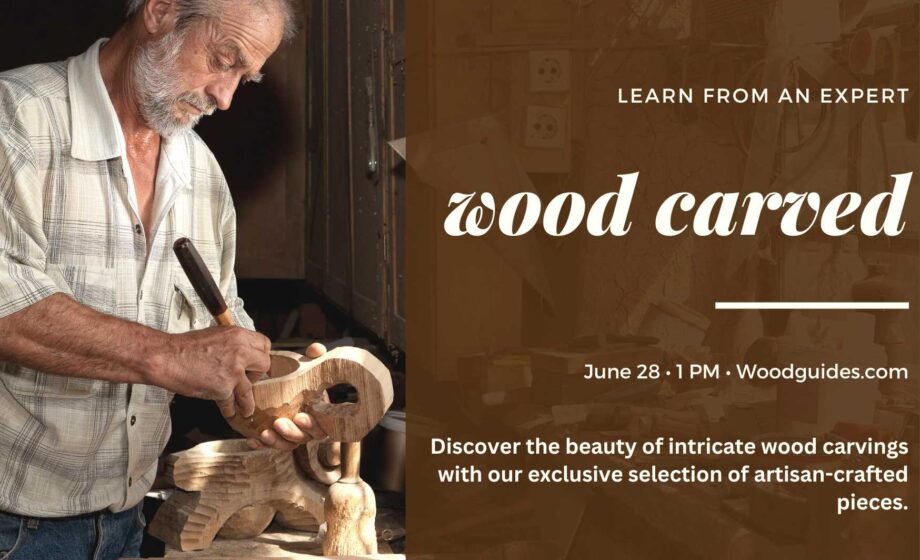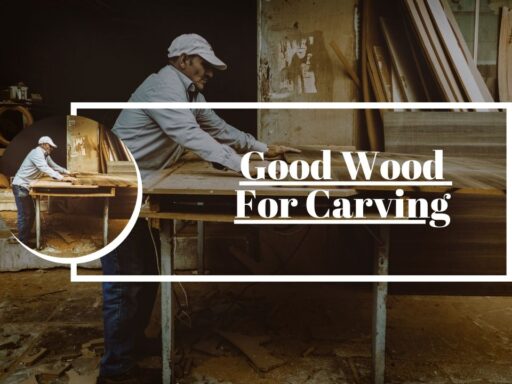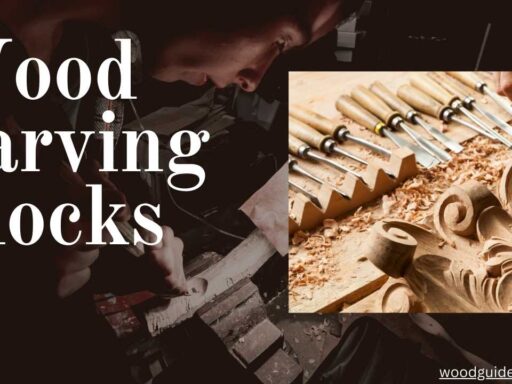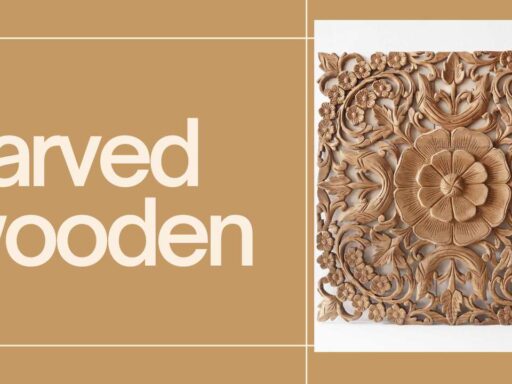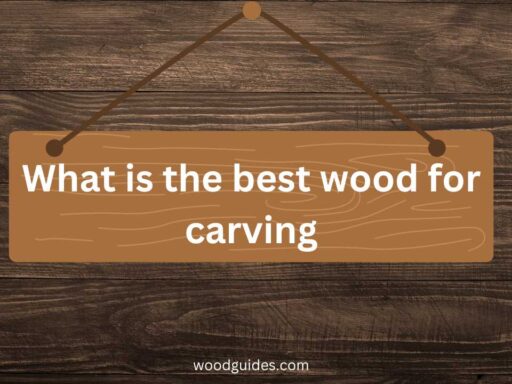Discover the intricate artistry of Wood Carved with our detailed website. Explore the craftsmanship behind this timeless craft
The art of carving wood has been an ancient and time-honored tradition for centuries. This is where a plain block of wood is transformed using various carving methods into a masterpiece of fine art. It would drive you mad. The technicalities and expertise needed to make these detailed wooden carvings are immense. In this article, we will go through the world of wood carved. We will look at its history, the techniques used, the tools and materials, and how to create wood-carved masterpieces step by step.
History of Wood Carved
Wood carving dates back thousands of years ago with evidences in Egypt, China and Greece ancient civilizations. The uses for wooden carvings in these early societies were mostly religious or ceremonial. The skill was highly valued and being a highly skilled sculptor was something that people admired most. As time passed, woodcarving changed. It split into styles that spread across the continents. Each area developed its own style and technique.
Different Types of Wood Carving Techniques
Each woodcarving method has unique attributes. They give the methods their distinctiveness and offer varied artistic possibilities. Examples include relief carvings, chip carvings and full round carvings.
Relief carvings involve cutting figures or designs into flat surfaces so that they stand out from the background. Through this technique intricate panels in wood carved could be seen among other architectural decorations.
Chip carving involves making tiny cuts into blocks of wood. This creates designs by removing little chips. You must be accurate and pay close attention when using this technique. The chips must all be cut carefully to make the desired pattern.
Sculpture-carving or full round involves making 3D sculptures from one piece of timber. More creativity would lie here since no boundaries will exist on what the sculptor can do with shaping his/her wood.
Tools and Materials Needed for Wood Carving
A number of basic tools and materials are needed to start your journey in wood carving. The tools required for wood carving may vary depending on the project’s technique and complexity. The most commonly used implements of the trade are chisels, gouges, mallets and carving knives. These come in different sizes and shapes each meant for its own specific use.
Wood selection is another very crucial aspect in woodcarving apart from tools. Each wood has different traits. They greatly influence the carving process and the final product. This includes basswood, mahogany, cherry and oak among others that are often used for this purpose. Each piece of timber has its own unique grain, hardness, and texture. These traits could make the final carved piece look better.
Step-by-Step Process of Wood Carving
Woodcarving is exacting. It requires patience, experience, and attention to detail. This is especially true for the small areas worked on over time. Below are some steps which can help you understand how to make a carved masterpiece out of timber:
Design: First begin by drawing your design either on paper or straight onto the piece of wood it will be cut from. This outline serves as your blueprint for the planned carving before commencement can occur.
Rough shaping: Rough shape your design with a gouge or chisel to cut-away small pieces of the wood. The carving’s form and proportions will be established.
Use smaller carving tools after getting the rough shape. This will let you add more details and refine your subject. This is where detailed carvings are done that bring out its masterpiece form.
Smoothing and finishing: This includes sanding the surface of the carved wooden item so as to make it smooth by removing any raised grain. You can coat it with varnish or wax for protection and aesthetics purposes.
Famous Wood Carvers and Their Masterpieces

Credit: www.pexels.com
Over time many skilled wood carvers made masterworks that have not been forgotten until today. One such famous wood-sculptor was Grinling Gibbons. He was an English sculptor who lived in the seventeenth century. He made delicately carved wooden sculptures seen on landmarks like St Paul’s Cathedral and Hampton Court Palace.
Samuel McIntire, however, was a well-known wood-carver from Salem, Massachusetts. He helped shape architectural trends in his state from the late 18th century through the early 19th century. The talented works by McIntire are found in buildings like Hamilton Hall located at Chestnut Street District or Salem.
The Role Of Wood Carved Master Pieces In Different Cultures
Wooden master pieces carry great cultural values across different continents. They use figures of gods from myths. The myths come from various woods. They use the figures as spiritual symbols. They do this in all communities. This shows their religious beliefs. Temples, churches or holy spaces display them primarily for devotion and worship.
These wood carved items also reflect various traditional aspects related to places where they originate thereby acting as cultural signifiers among their owners since these were artistic activities carried out over years by residents of those areas.
Benefits of Wood Carved
Stress Reduction
The process of carving can sometimes be meditative resulting into peace in the mind. Cutting with focus and intention helps people to easily lessen anxiety and stress levels that are experienced in order to accomplish each piece.
Enhancing Creativity
Wood carving as a practice stimulates creativity by allowing the carver to think in images and manipulate wood according to their imagination. This enhances problem solving skills, good design sense.
Mindfulness
One of the important elements of woodcarving is being fully present during the act of carving, which is called mindfulness. People who are in this state are aware but relaxed as they enjoy more satisfaction.
Caring for and preserving works made from Wood Carving
These pieces require continuous maintenance to uphold its physical appeal across time. Here are ways you can take care of your sculptures:
Dust regularly: You can use soft brush or cloth on top surface of the carving where there may be some dirt accumulation. Avoid using abrasive materials since they will produce scratches on it.
Avoid direct sunlight: Ultraviolet rays lead to sun fading colorants used on wooden art hence should be located far from direct sunlight exposure otherwise wood becomes warped.
Control of Temperature and Humidity
In order to prevent warping, a type of material which reduces and increases in size when it gets hot and wet needs a regulated environment with favorable temperature and humidity. Woods’ shapes or cracks can be avoided through maintenance of constant levels of temperature and humidity.
Wooden Carved Artworks Cleaning
If necessary, you may likewise wipe the wooden artwork using a mild soap solution on a soft rag. To avoid destroying its texture, do not expose the wood to harsh chemicals or too much water.
Where to Buy Wood Carved
Art lovers who are interested in purchasing some of these artistic works may want to know where they can find them. Functional art pieces made by professional artists can be found at craft fairs, art galleries as well as online marketplaces with many options available for purchase. These platforms usually showcase various designs and styles created by talented wood carvers from different regions. However one needs to thoroughly research these works before making any purchases so as to ascertain their authenticity and quality.
Wood Carved That Inspire
How to Make Woodwork Diy
Beginners have smooth projects that they must start with if they really want to succeed; those that cannot be ruined even once accomplished. Examples are spoons, walking sticks or decorative signs made out of such things like wooden slabs.
Projects Suitable for Beginners
Novices in this field have many woodworking projects from which they can choose what suits them best. For instance one may engrave reliefs onto flat planks for coasters or personalize picture frames- all straightforward yet satisfying assignments.
Medium Level Projects
Intermediate tasks like carving very small animal figures on top of wooden boxes will stretch their abilities further into perfecting technique and achieving intricate designs after they have understood these basics.
Frequently Asked Questions
HOW DIFFICULT IS IT TO LEARN Wood Carved?
One has to practice, be patient and keep at it. It may look difficult at first but with proper guidance and determination, everyone has the ability to carve wood.
WHICH IS THE BEST TYPE OF WOOD FOR BEGINNERS?
Basswood is a popular choice for beginners because it has an even grain that is relatively soft for easier carving. Moreover, it can be found easily and costs less making it suitable for those who want to begin their woodcarving journey.
CAN Wood Carved BE REPAIRED IF THEY ARE DAMAGED?
Some of these carvings can be restored in case they get slightly damaged. As such, one should seek advice from a professional restorer or conservator specializing in carving whenever there is such damage.
Conclusion
The art of carving wooden objects goes back hundreds of years yet it still remains relevant today. Masterpieces created by craftsmen from timber have been around since time immemorial and they deserve admiration. For someone who intends or simply loves art, there are few things as intriguing as reading about woodcarving because this way one will know more about the past lives of people through understanding the efforts put in place by their ancestors as well as how much culture valued this form of art; hence appreciate these little details in wooden sculpture and dig into your own artisanal skills sometimes.
CTA: Interested in beginning to explore the realm of Wood Carved? Commence by getting acquainted with how a relief is carved by checking our beginner’s guide on relief carving so that you start your artistic journey today!
